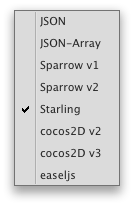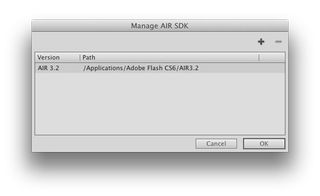Welcome to the new version of Adobe Flash Pro, Flash Pro CS6, or 12 if you want to keep count. Over the last 24 months web development has seen a change in focus. Where rich content was the bastion of Flash and Flex, now HTML5 and various JavaScript libraries have taken on some of that responsibility. However, Flash has always had the luxury of being ahead of the curve when it comes to new features and new areas to expand and extend in to.
Adobe Flash Pro CS6 cuts the mustard
Adobe Flash Pro CS6 won't disappoint as it has a host of new and improved features, although if you're looking for a long list of new 'toys' then you may be disappointed. Having said this, there are an awful lot of 'under the hood' improvements and workflow updates for us to get excited about. The one thing to understand is that Adobe has obviously looked at what people are doing with their tools, and where they can add value.
To that end Adobe Flash Pro CS6 has a lot of features that revolve around both gaming and developing on multiple platforms and devices. There are also updates to the underlying architecture of Adobe Flash Pro CS6, but we'll get to that shortly. Let's talk about some of the new features ... let's talk about games.
Let's play in Adobe Flash CS6
Traditionally Flash has been all about vector based assets and animation via the timeline; and for the majority of requirements that is fine. If though, you are a game developer then vectors are generally viewed as bad. In 2D games it is more common to use a process of animating or applying graphics by copying specific regions from a single bitmap known as a 'sprite sheet'.
Working with sprite sheets
Creating sprite sheets generally requires numerous tools and quite a bit of time. Creating a sprite sheet couldn't be easier. Just make your frame-based animation on the timeline and create a symbol out of it. Then you can launch the Generate Sprite Sheet dialog by simply right clicking on the symbol (either directly on the stage or via the symbol entry in your library), and selecting Generate Sprite Sheet. You can add more than one symbol to a single sprite sheet by selecting more than one symbol.

Once the dialog opens your animation will have been laid out as a single image and you just hit the Export button to produce your sprite sheet. The dialog also incorporates a preview panel that allows you to preview the animation of a single symbol present in the sprite sheet, so you can easily see how it will look once exported.
Export to many

Adobe has taken the lead with the new sprite sheet functionality by providing flexibility to export your graphics for use in not only Starling (a Flash 2D game framework), but also easelJS, JSON, JSON-Array (all useful when developing HTML 5 games) as well as Sparrow and Cocos2D (popular iOS game frameworks).
This is a great feature and, while it is primarily aimed at game developers, it does provide another approach to asset generations for use within Flash based solutions as well as other technologies.
Working with devices
Another big improvement in this version of Adobe Flash Pro is AIR integration and support. While AIR has been supported in previous versions it has be rather awkward to update or debug / test your AIR applications - especially when on a mobile device like an Android or iOS phone or tablet.
Also given the diversity of devices that are currently available and coming to the market, new or specific features do appear that you may need to access. To allow you to keep up to date Adobe has added new features to help keep you ahead of this curve (so to speak).
The first of these is the ability to easily update the Adobe AIR SDK. To achieve this Adobe has provided a panel for managing the version(s) of AIR that is accessible to Flash Pro CS6. It is worth pointing out that you will still need to download those versions of AIR that you wish to target as this panel just makes linking AIR to Flash Professional easier.

Debugging and testing

Debugging content created using AIR on devices has always been a bit hit and miss in Flash Pro. Thankfully Adobe has taken all of the feedback from its user base on board and made debugging and testing both locally and remotely far user-friendlier. You can now remotely debug content running on iOS as well as content running on Android from within Flash Pro CS6 making it easy to step through your code and set breakpoint to see exactly what it going on within your application or game.
The inclusion of a simulator for testing touch gestures, geo-location and accelerometer functionality directly in Flash Professional is another area of improvement. In the past this had been assigned to a separate application - Device Central. In testing this works pretty well and gives you a way to test your content before moving it on to a device to continue more in-depth testing.
Native extensions in Flash Pro CS6
Another new feature is support for Native Extensions. Native Extensions are compiler code that is written in the native language of the target device, which forms a bridge that you can access to interact with specific features or hardware that isn't directly supported by AIR. This means that if you need to access the vibration function of a device or send a notification via the inbuilt notification system you can just add in the relevant ANE and use ActionScript to send and receive data. If you don't feel up to writing your own ANE (or you do and want more information on how to go about it) check out the Adobe Native Extension page.

Captive Runtime
The last improvement of note with AIR is support for Captive Runtime. This allows you to export AIR content that targets the desktop or Android devices with AIR as part of the application. So the end-user doesn't need to install AIR separately. iOS already works in a similar manner so doesn't leverage this functionality.
CreateJS
Adobe hasn't just been tightening up Flash Pro CS6 from a performance and productivity perspective. It's also been hard at work adding additional functionality to allow Flash designers and developers to easily export content for use in HTML5. While not part of the core IDE, Adobe will be releasing an extension for paid users of Flash Pro CS6 that allows you to export to the CreateJS suite of JavaScript libraries making it easier for you to re-use assets and animations in JavaScript as well as in the Flash Player.
And the rest...
If those features weren't enough, Adobe has also added some easily overlooked features to Flash Pro CS6. Let's look at a few in closing: Autosave, Hardware Acceleration / RenderMode.
Autosave: While not that impressive compared to the enhancements already mentioned, auto saving of files is a blessing in disguise. I'm sure you've had applications crash, your OS blue screen or hang and lost work. When you create a new Flash file you are given the option of setting it to autosave and the duration between saves (the default is 10 minutes). You can also set a file to auto save from the Document Settings in the properties panel. Now you can rest easy safe in the knowledge that your Flash files can be set to auto save.
Hardware Acceleration: To take advantage of hardware acceleration within your Flash content you need to not only have the relevant code within your content but you also need to set the wmode parameter in your HTML wrapper to direct. Something that is easy to overlook. Fortunately you can now set that value from within your publishing settings. If you are creating AIR based content the entry has a different name. Here it is called renderMode but it provides the same result.
PRICE
Full £556 (ex VAT), Upgrade £79 (ex VAT), £38.11/month as part of annual Creative Cloud subscription and £57.17/month as part of month-by-month Creative Cloud subscription. For details on where to buy, please visit the Adobe Store.
SYSTEM SPECS
For system specifications for Adobe Flash Pro CS6, and other apps in Adobe CS6, please visit our Adobe system specs page.
